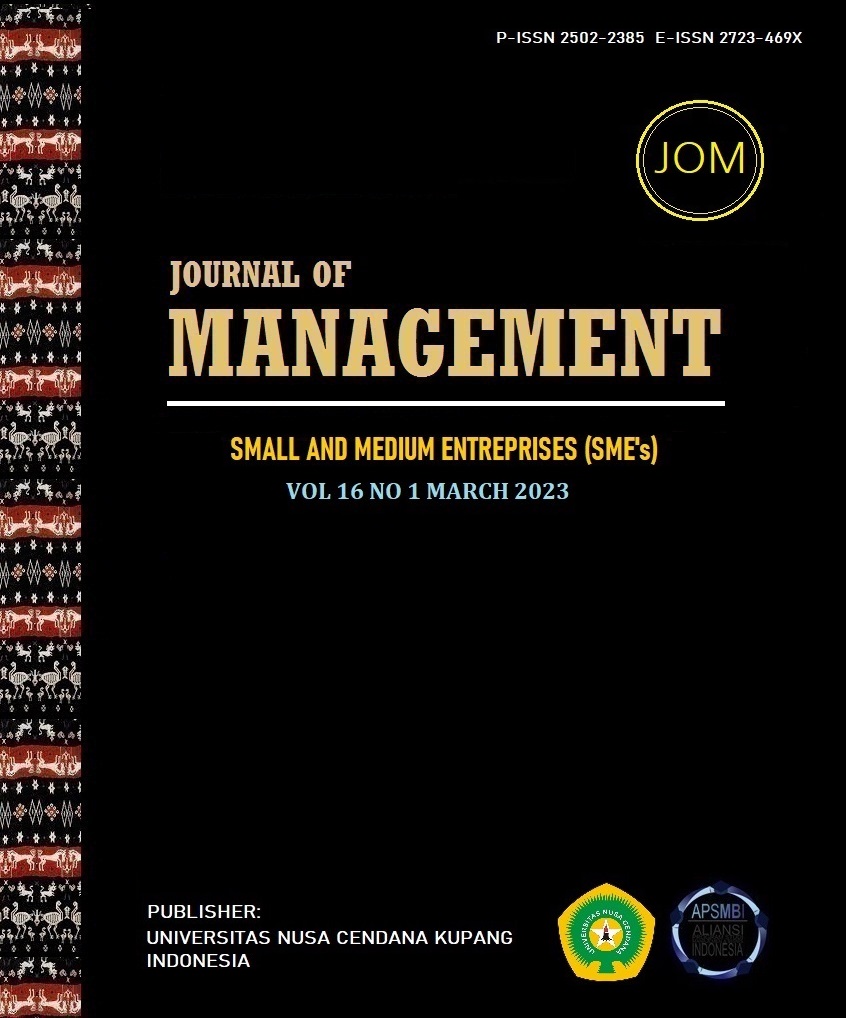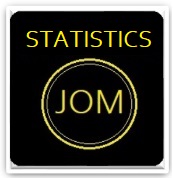MICROFINANCE AND FINANCING OF MICRO-ENTREPRENEURSHIP IN BURUNDI
Abstract
This article aims to identify the determinants of financing microenterprises in Burundi by microfinance institutions. Using the logit model and exploiting data from the loan portfolios of Burundian microfinance institutions, the econometric analysis reveals that the financing of microenterprises in Burundi is strongly correlated with characteristics of these and/or those of their micro-entrepreneurs on one hand, and to the nature of the guarantee presented when applying for credit on the other hand. We conclude by saying that the consolidation of public financial support, the establishment of monitoring policies for these guarantee funds, and the involvement of all stakeholders could substantially improve the financing of microenterprises in Burundi.
Keywords: Microfinance; Credit; Micro-entrepreneurs; Microbusiness; Burundi
Downloads
References
Agarwal, S., Rahman, S., & Errington, A. (2009). Measuring the determinants of relative economic performance of rural areas. Journal of Rural Studies, 25(3), 309–321.
Al Mamun, A., Fazal, S. A., & Muniady, R. (2019). Entrepreneurial knowledge, skills, competencies and performance. Asia Pacific Journal of Innovation and Entrepreneurship,
Arellano R. (1994). Une classification des entreprises du secteur informel (Presses de). Gasse Y. et Verna G. sous la direction de; In Arellano R.; Les entreprises informelles dans le monde.
Armendariz de Aghion B. et Morduch J. (2005). The Economics of Microfinance (Library of).
Atanasova, C. V., & Wilson, N. (2004). Disequilibrium in the UK corporate loan market. Journal of Banking and Finance, 28(3), 595–614.
Bakehe, N. P. (2016). Informalité et productivité des très petites et petites entreprises au cameroun. Innovations, 51(3), 105–124.
Banerjee A.V & Dufflo E. (2012). Repenser la pauvreté (E. du Soleil, Ed.).
Banque de la République du Burundi. (2012). Rapport d’enquête sur l’offre des produits et services financiers formels au Burundi au 31 décembre 2016.
Barber, B. M., & Odean, T. (2001). Boys will be boys: Gender, overconfidence, and common stock investment. Quarterly Journal of Economics, 116(1), 261–292.
Bédécarrats, F., & Marconi, R. (2009). L’Influence De La Régulation Sur La Contribution De La Microfinance Au Développement : Le Cas De La Bolivie. Revue Tiers Monde, 197(1), 71–90.
Behr, P., Entzian, A., & Güttler, A. (2011). How do lending relationships affect access to credit and loan conditions in microlending? Journal of Banking and Finance, 35(8), 2169–2178. Bekolo C. et Beyina E. (2009). Le financement par capital risque dans les pme innovantes : le cas specifique des PME innovantes camerounaises. Innovations, 29(1), 169–195.
Booth, A. L., & Nolen, P. (2009). Gender differences in risk behaviour: Does nurture matter? In Economic Journal (Vol. 122).
Boukar, H. (2009). Les facteurs de contingence de la croissance des micro et petites entreprises camerounaises. La Revue Des Sciences de Gestion, 237–238(3), 75.
Boyé S. & hajdenberg J. & Poursat C. (2006). Le guide de la microfinance : Microcrédit et épargne pour le développement (Editions d). France.
Brana, S., & Jégourel, Y. (2011). La réalité de la microfinance à l’échelle régionale : l’exemple de l’Aquitaine. Revue d’Économie Régionale & Urbaine, avril(2), 245–268.
Buyinza, F., Mutenyo, J., & Tibaingana, A. (2018). Factors Affecting Access to Formal Credit by Micro and Small Enterprises in Uganda. Athens Journal of Business & Economics, 4(4), 405–424.
Chowdhury M. & Alam Z. (2017). Factors Affecting Access to Finance of Small and Medium Enterprises (SMEs) of Bangladesh. The USV Annals of Economics and Public Administration, 17(2(26)), 55–68.
Deininger, K., Savastano, S., & Xia, F. (2017). Smallholders’ land access in Sub-Saharan Africa: A new landscape? Food Policy, 67, 78–92.
Diaz-Serrano, L., & Sackey, F. G. (2018). Microfinance and credit rationing: does the microfinance type matter? Journal of Sustainable Finance and Investment, 8(2), 114–131.
Djaowe, J., & Maiday, B. (2017). Accès des individus aux services des institutions financières camerounaises : une analyse dans la région de l ’ Adamaoua. 19(4), 870–885. Retrieved
Doumbia, S. (2011). Surliquidité bancaire et « sous-financement de l’économie ». Revue Tiers Monde, 205(1), 151–170.
Fauré, Y. (1992). Financement de la petite et moyenne entreprise à Toumodi ( Côte-d ’ lvoire ) : l ’ illusion informelle. Revue Internationale P.M.E. Économie et Gestion de La Petite et Moyenne Entreprise, 5(n°3-4), 61–88.
FinAccess. (2009). Financial inclusion in Kenya Survey results and analysis from FinAccess 2009. In Main. Retrieved from Rapport final
Food and Agriculture Organization of the United Nations (FAO). (2019). Women’s access to rural finance: challenges and opportunities. 1–17.
Gomez, G. M. (2008). Do micro-enterprises promote equity or growth ? Institute of Social Studies, (June), 1–29. Retrieved from enterprises_promote_equity_or_growth
Guérin I., Palier J. et Prévost B. (2009). Femmes et microfinance : Espoirs et désillusions de l’expérience indienne (Savoirs francophones., Ed.).
Guérin, I. (2000). Aléa moral et asymétrie d ’ information : le prêt collectif à responsabilité conjointe. Walras, Centre Université, CNRS.
Guérineau, S., & Jacolin, L. (2014). L’inclusion financière en Afrique subsaharienne : faits stylisés et déterminants. Revue d’économie Financière, 4(116), 57–80.
Haldar, A., & Stiglitz, J. E. (2016). Group lending, joint liability, and social capital: Insights from the Indian microfinance crisis. Politics and Society, 44(4), 459–497.
Jacquet, P., & Pollin, J.-P. (2012). Systèmes financiers et croissance. Revue d’économie Financière, N° 106(2), 77–110.
Karanja, J. G., Kiragu Mwangi, A., & Ngigi Nyakarimi, S. (2014). Analysis of Factors Influencing Access to Credit Services by Women Entrepreneurs in Kenya. Research Journal of Finance and Accounting, 5(11), 2222–2847.
Kobou, G., Tabi, H. N., & Mougou, S. (2009). L’efficacité du financement des micro et petites entreprises dans la lutte contre la pauvreté au Cameroun. “La Vulnérabilité Des TPE et Des PME Dans Un Environnement Mondialisé”11es Journées Scientifiques Du Réseau Entrepreneuriat, 27, 28 et 29 Mai 2009, INRPME, Trois-Rivières, Canada., 1–16.
Kodjo, M. K. Z., Abiassi, E. H., & Allagbe, M. C. (2003). Le Financement de l ’ Agriculture Béninoise dans un Contexte de Libéralisation : Contribution de la Micro Finance.
Lamiraud, K., & Vranceanu, R. (2018). Group gender composition and economic decision-making: Evidence from the Kallystée business game. Journal of Economic Behavior and Organization, 145, 294–305.
Lemeshow S. & Hosmer D. w. (1982). A review of goodness of fit statistics for use in the development of logistic regression models. American Journal of Epidemiology, 115(1), 732–733.
Levratto, N. (1990). Le financement des PME par les banques : contraintes des firmes et limites. Revue Internationale P.M.E. : Économie et Gestion de La Petite et Moyenne Entreprise, 3(n° 2), 193–213.
Lhériau, L. (2009). Précis de réglementation de la microfinance (Agence Fra).
Lin, L., Wang, W., Gan, C., Cohen, D. A., & Nguyen, Q. T. . (2019). Rural Credit Constraint and Informal Rural Credit Accessibility in China. Sustainability, 11(7), 1935.
Mayoukou, C., & Kertous, M. (2015). L’accès au crédit individuel par les clients des institutions de microfinance du Congo : une analyse des déterminants de l’auto-exclusion et de l’obtention du prêt. Mondes En Developpement, 169(1), 121–138.
McPherson M. A. &, & Rous J. J. (2010). Access to Finance and Small Enterprise Growth: Evidence from East Java. The Journal of Developing Areas, 43(2), 159–172.
Mesquita D. (2009). Les institutions de finance solidaire et le financement de l’inclusion sociale : application au cas de la région Haute Normandie. Université de Rouen.
Messah O.B. & Wangai P.N. (2011). Factors that Influence the Demand for Credit for Credit Among Small- Scale Investors : a case study of Meru Central District , Kenya. Research Journal of Finance and Accounting, 2(2), 1–32.
Messomo Ellé, S. (2017). Microcrédits et performances financière et sociale des institutions de microfinance au Cameroun. La Revue Gestion et Organisation, 9(2), 79–91.
Mol-Gómez-Vázquez, A., Hernández-Cánovas, G., & Koëter-Kant, J. (2019). Bank market power and the intensity of borrower discouragement: analysis of SMEs across developed and developing European countries. Small Business Economics, 53(1), 211–225.
Montalieu T. (2002). Les institutions de microcrédit : entre promesses et doutes : quelles pratiques bancaires pour quels effets ? Mondes En Développement, 3(119), 21–32.
Mustapha, E. K. (2014). La gestion de la relation client dans la banque: Cas du marché marocain. La Revue Gestion et Organisation, 6(1), 20–27.
Ngige Ng’ang’a, S., & Sakwa, M. M. (2015). Social Factors that Influence Loan Accessibility by Youth Entrepreneurs in Kenya: A Case of Youth Enterprise Development Fund in Gatundu South Constituency. International Journal of Academic Research in Business and Social Sciences, 5(11), 230–248.
Nsengiyumva T. (2021). La microfinance et appui au microentrepreneuriat: cas du Burundi. Thèse, Université de Rouen-Normandie.
Nsengiyumva T. & Bigirimana C. (2021). Microfinance et financement des activités agricoles: l’expérience du Burundi. Tendances de Management Africaines, 21(2), 120–127.
Nugroho, T., Rusydiana, A. S., & Tubastuvi, N. (2018). Micro and Small Enterprises Financing Model Through the Revolving Fund Management Institution in Indonesia: Ahp Approach. International Journal of Islamic Business Ethics, 3(2), 496–504.
Obebo, F., Wawire, N., & Muniu, J. (2018). Determinants of Participation of Micro and Small Enterprises in Microfinance in Kenya. International Journal of Economics & Management Sciences, 07(03), 3–7.
Osano, H. M., & Languitone, H. (2016). Factors influencing access to finance by SMEs in Mozambique: case of SMEs in Maputo central business district. Journal of Innovation and Entrepreneurship, 5(13).
Pirotte A. (2011). Econométrie des données de panel : théorie et applications (Economica).
Ramboarison-Lalao, L. (2015). Quels financements pour l’entrepreneuriat féminin à Madagascar ? Entreprendre & Innover, n° 25(2), 35.
République du Burundi. (2006). Décret n° 100/203 du 22 Juillet 2006 portant règlementation des activités de microfinance au Burundi. Burundi.
République du Burundi. (2011). Loi n°1/13 du 09 août 2011 portant révision du code foncier du Burundi. Bujumbura.
République du Burundi. (2014a). Rapport du pôle de qualité inter pays pour le développement des compétences techniques et professionnelles (PQIP/DCTP) sur l’emploi des jeunes en Afrique : cas du Burundi. Bujumbura.
République du Burundi. (2014b). Stratégie nationale d’inclusion financière (SNIF) 2015-2020. Burundi.
Réseau des Institutions de Microfinance au Burundi. (2003). Les indicateurs de performances des Institutions de microfinance au Burundi (2003rd ed.). Bujumbura.
Senior A. (2012). Financing the Micro, Small and Medium Enterprises (MSME) Sector in Jamaica : Constraints and Prospects for Leasing Factoring and Microfinance. Bank of Jamaica, (2), 1–36.
Shaw, J. (2004). Microenterprise occupation and poverty reduction in microfinance programs: Evidence from Sri Lanka. World Development, 32(7), 1247–1264.
Spence, M. (1973). JOB MARKET SIGNALING. Quarterly Journal of Economics, 87, 335–374.
Stein, J. C. (2002). Information production and capital allocation: Decentralized versus hierarchical firms. Journal of Finance, 57(5), 1891–1921.
Stein, P., Ardic, O. P., & Hommes, M. (2013). Closing the Credit Gap for Formal and Informal MSMEs. In Working Paper.
Stiglitz, J. E. (1990). Peer monitoring and credit markets. The Economics of Rural Organization, 4(3), 70–86.
Stiglitz J. et Weis A. (1981). Credit Rationing in Markets with Imperfect Information. American Economic Review, 73, 912–927.
Taka D. (2013). L’entrepreneur et la décision d’octroi de crédit bancaire aux PME : une analyse empirique. Revue Camerounaise de Management. Revue Semestrielle Bilingue, (26), 57–70.
Tallon, M. J. (1988). Taux d ’ intérêt , rationnement du crédit et déséquilibres macroéconomiques. Observations et Diagnostics Économiques, (n° 24), 125–161.
Varian H.R. (1989). Monitoring Agents with Other Agents. In Center for Research on Economic and Social Theory CREST, Working Paper.
Wahidi, I., & Paturel, R. (2016). L’octroi de crédits aux femmes entrepreneuses libanaises par les banquiers : le cas du dispositif Kafalat. La Revue Gestion et Organisation, 8(1), 40–52.
Zidani, H., & Jarboui, A. (2011). L’impact des facteurs socio-économiques sur le financement des micro-projets par la Banque Tunisienne de Solidarité : Cas de la Tunisie. La Revue Gestion et Organisation, 4(6), 1–24.

 Théogène Nsengiyumva(1*)
Théogène Nsengiyumva(1*)



